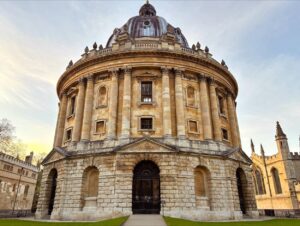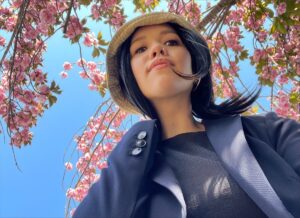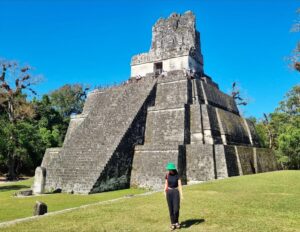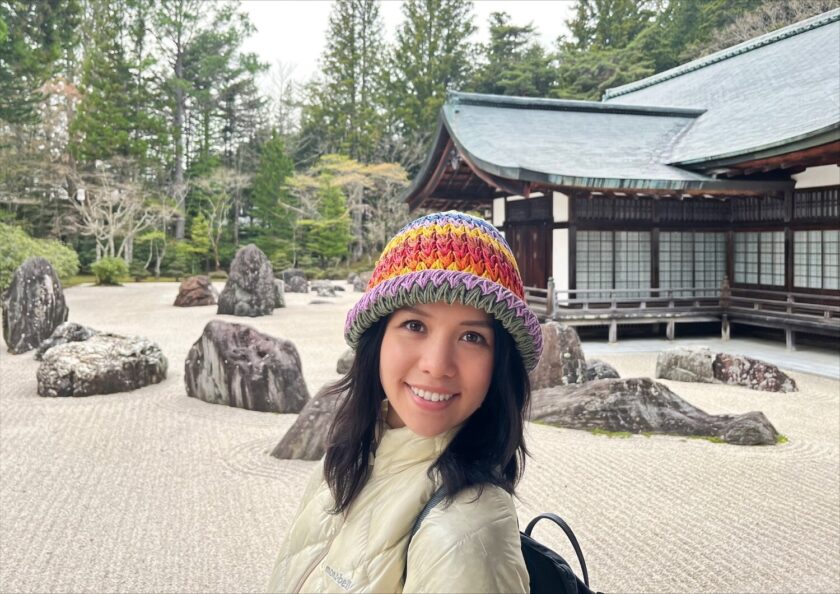
Nestled amidst the lush forests of the Kii Mountains in Wakayama Prefecture, Koyasan (Mount Koya) stands as a symbol of spiritual enlightenment and cultural richness.
On my second trip to Japan I wanted to explore a few new areas in combination with some places that I was dying to revisit. One of these new spots was Koyasan.
A good friend of mine had visited and fallen in love with the place so I was intrigued. Her descriptions of sleeping in a Buddhist temple and wandering through a secluded ancient landscape had captivated my imagination. I vowed that if I ever returned to Japan, this town would be high on my list of places to explore.
Well, the stars aligned and a trip to Japan was on the horizon again. I hadn’t forgotten what my friend told me so I factored Koyasan into a new itinerary. I had a good feeling about this place, so I booked three nights in temple lodging (Shukubo) and counted down the days until my trip.
Well, my friend was right, not that I ever doubted her, of course. Koyasan is without doubt one of the most magical places in Japan, and my trip to Okunoin Cemetery sticks out as being one of the most unique places I’ve ever seen.
With its ancient temples, serene atmosphere, and natural beauty, Mount Koya offers a unique and enriching travel experience that transcends the ordinary.
Here’s your comprehensive guide to exploring this sacred mountain:
History and Culture
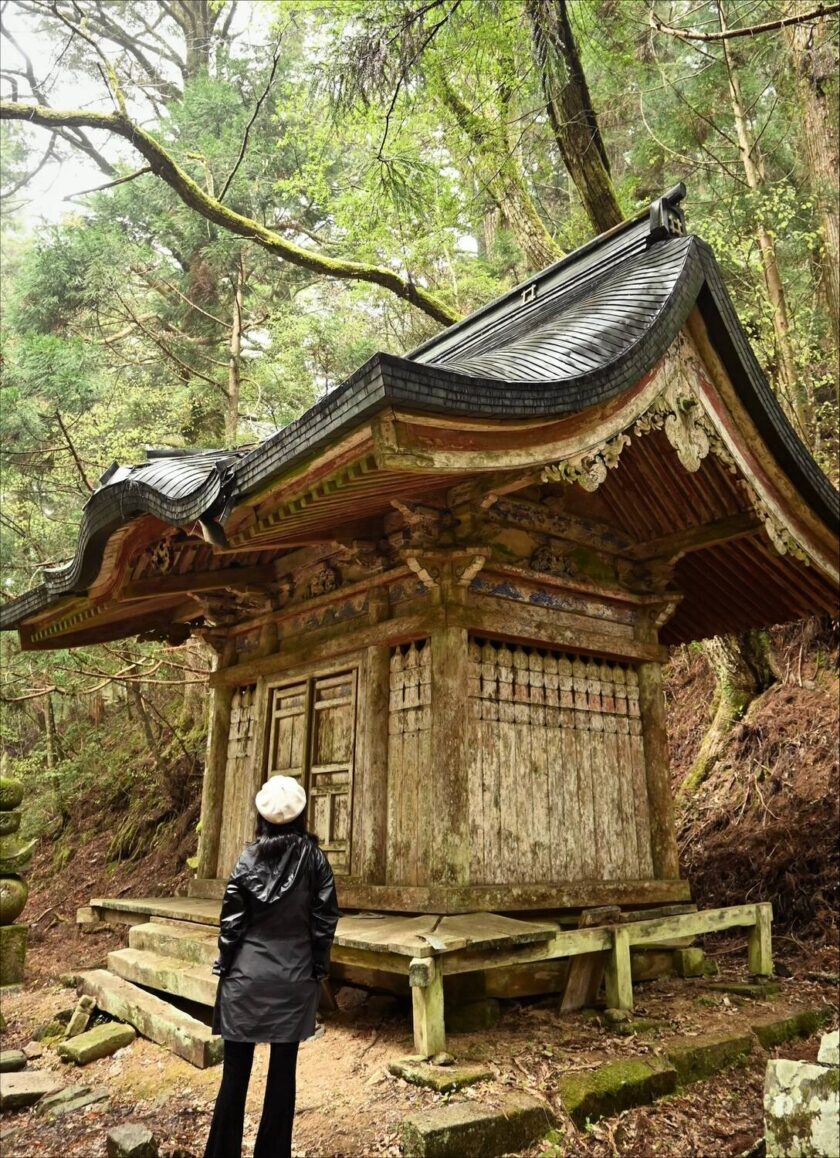
Founded by the revered monk Kukai, also known as Kobo Daishi, in the early 9th century, Mount Koya has been a centre of Buddhist practice and learning for over a millennium.
The mountain is dotted with over a hundred beautiful temples, each bearing testimony to centuries of religious devotion and cultural heritage. Okunoin Cemetery, where Kukai’s mausoleum resides, is one of Japan’s most sacred sites, with thousands of moss-covered tombstones and towering cedar trees creating an ethereal atmosphere.
Mount Koya exudes an aura of tranquility and reverence, drawing pilgrims and travellers seeking solace and spiritual awakening. While I’m not religious myself, I love learning about the traditions, cultures, and the history of a country through its religious practices.
The chance to visit sacred sites, discover age-old practices and traditions so ingrained in the social fabric of a region and country is one facet of why I find travelling so interesting. It opens my eyes to different ways of life and expands my view of the world, and that growth is something I feel passionate about.
Best way to get to Koyasan
The most direct way to get to Koyasan is from Osaka’s Namba or Shin-Imamiya stations.
From either or these stations, take the express train using the Nankai Koya line to Gokurakubashi station. The trip takes approximately 80 minutes on the express train, though if you miss one of the five that depart daily, don’t worry, the regular train departs frequently and only takes 10 minutes longer.
Once you reach Gokurakubashi station, you then take a quick cable car to reach Koyasan station. This is the fun part of the journey, as you head above the trees alongside the mountain to reach your final destination.
Koyasan Temple lodging (Shukubo)
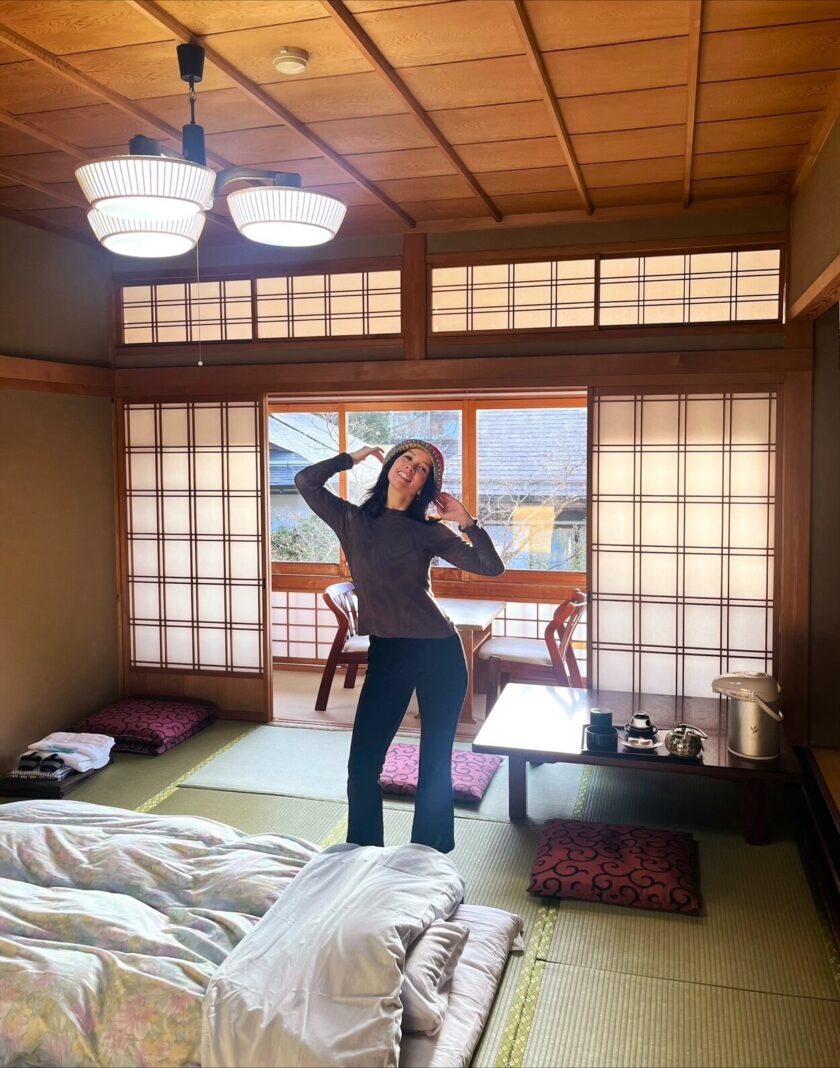
While it’s possible to visit Koyasan on a day trip from Osaka, I wouldn’t recommend it. You’d get to see a few highlights if you rush around, but you’d miss the unique opportunity to soak in the atmosphere and stay overnight in temple lodging. I encourage you to take your time to culturally immerse yourself in Koyasan by sleeping in a Buddhist temple.
These lodgings provide an escape from the busy cities and modern trappings ubiquitous all over Japan. While I love this aspect of Japan, it can also be a lot, especially if you’re not used to big cities. This is where Koyosan brings balance and harmony to any itinerary. Spend a few days here, or at least a night to recharge and capture the essence of the place.
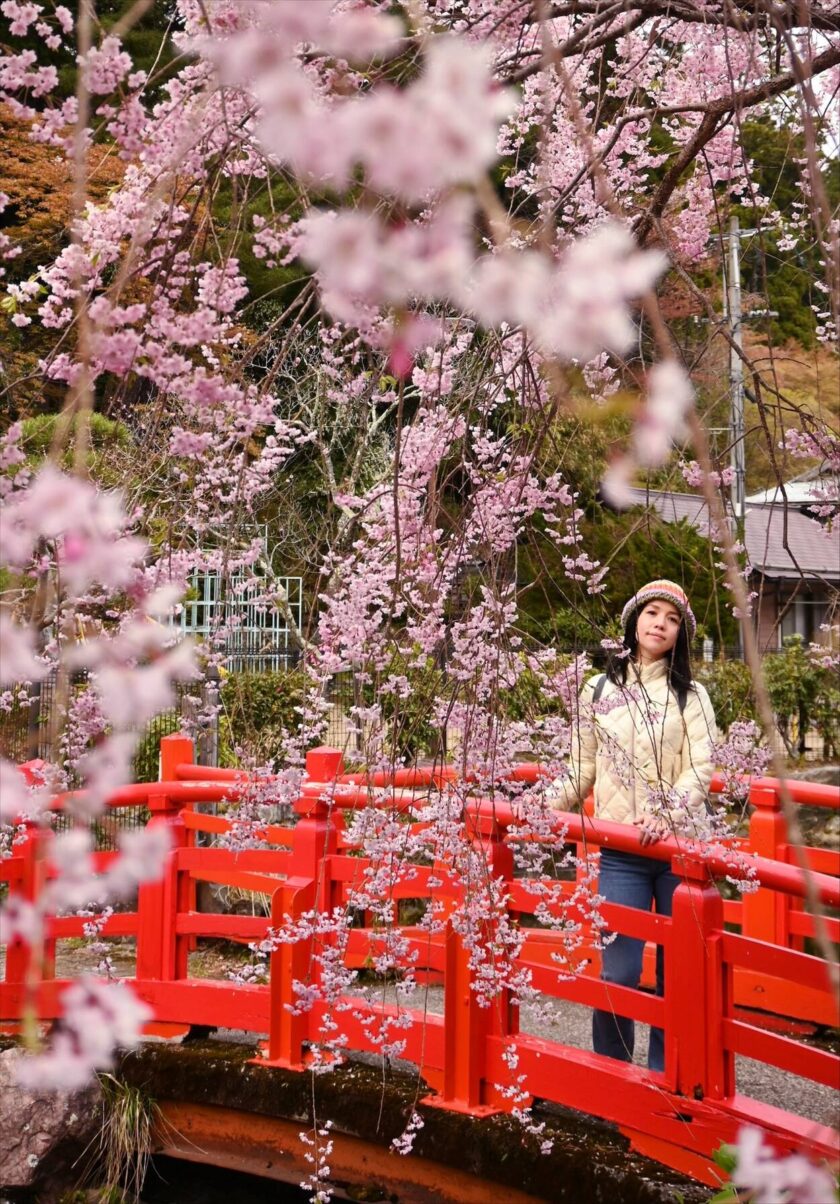
It is said that Kobo Daishi became fed up with the trappings and temptations of life in the capital (which was Kyoto at the time), and quite literally headed for the hills to stake out more peaceful surroundings. Despite that being very long ago, the reasons for visiting Koyasan and staying overnight remain the same.
As a result, a visit to Koyasan is not simply an opportunity to sleep inside a real Buddhist temple. By travelling to Koyasan you’re literally participating in a tradition that’s as old as Japan as we know it, and following in the footsteps of the man who founded Koyasan in the first place.
The process of staying in a temple and eating the food that’s thoughtfully prepared for you by Buddhist monks, joining morning prayer, and sleeping in a traditional tatami room, enhances any trip to Koyosan tenfold.
How to book temple lodging accommodation in Koyasan
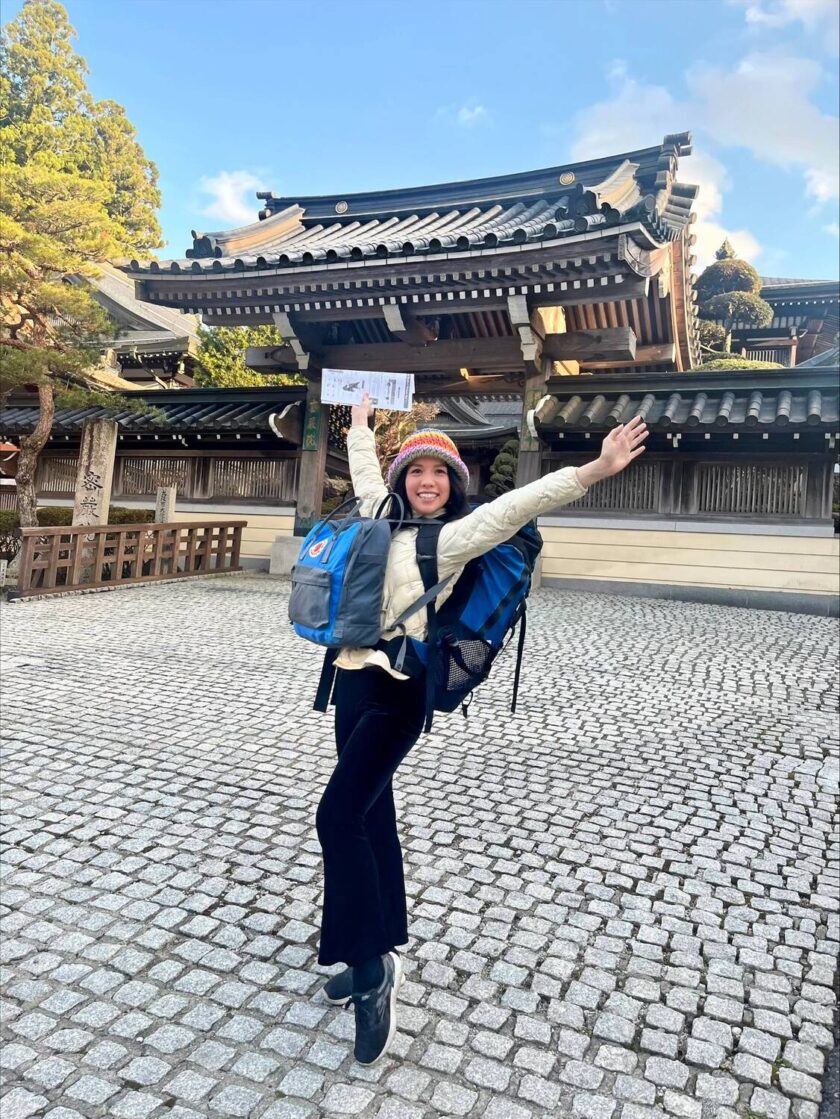
Ok, so this was the trickiest part about arranging accommodation in Koyosan, so I recommend planning early to secure accommodation. Initially I thought I would just be able to find accommodation via booking.com, but I was wrong!
It turns out, that there are only a handful of temple lodges that you can book via booking.com. The most popular is Ekoin Temple but it’s also the most expensive. I think a combination of being located right next to the cemetery gates, as well as it being one of the largest and most equipped for tourists make it slightly pricer than the rest. If you manage to secure a booking, I’d go for it. I’ve heard great things about this temple.
However, the traditional way of booking a temple lodging requires a little more time. The minimum time allowed is 7 days before arriving, but I recommend leaving much more wiggle room to get the Shukubo you want. I booked three weeks in advance but I still didn’t get the lodging I applied for, which gives you an idea how popular some of them are. In the end I was allocated Mitsugon-in temple which I’ll talk about in this post.
Booking process:
- Log onto the official Koyasan website.
- Click on the reserve option in the top right-hand corner
- Read through the text and press ‘Agree with email’, which will take you through to the Shukubo Reservation Form.
- Fill in the form including your details and dates of travel.
- The great thing about the application is that it gives you a list of the temple lodgings to stay in. You select your preferred choice, as well as your 2nd and 3rd choice, and they will do their best to make you a reservation at your preferred Shukubo.
- They will aim to get back to your within 3 working days to notify you with the details of where you’ll be staying.
Where food is truly a work of art
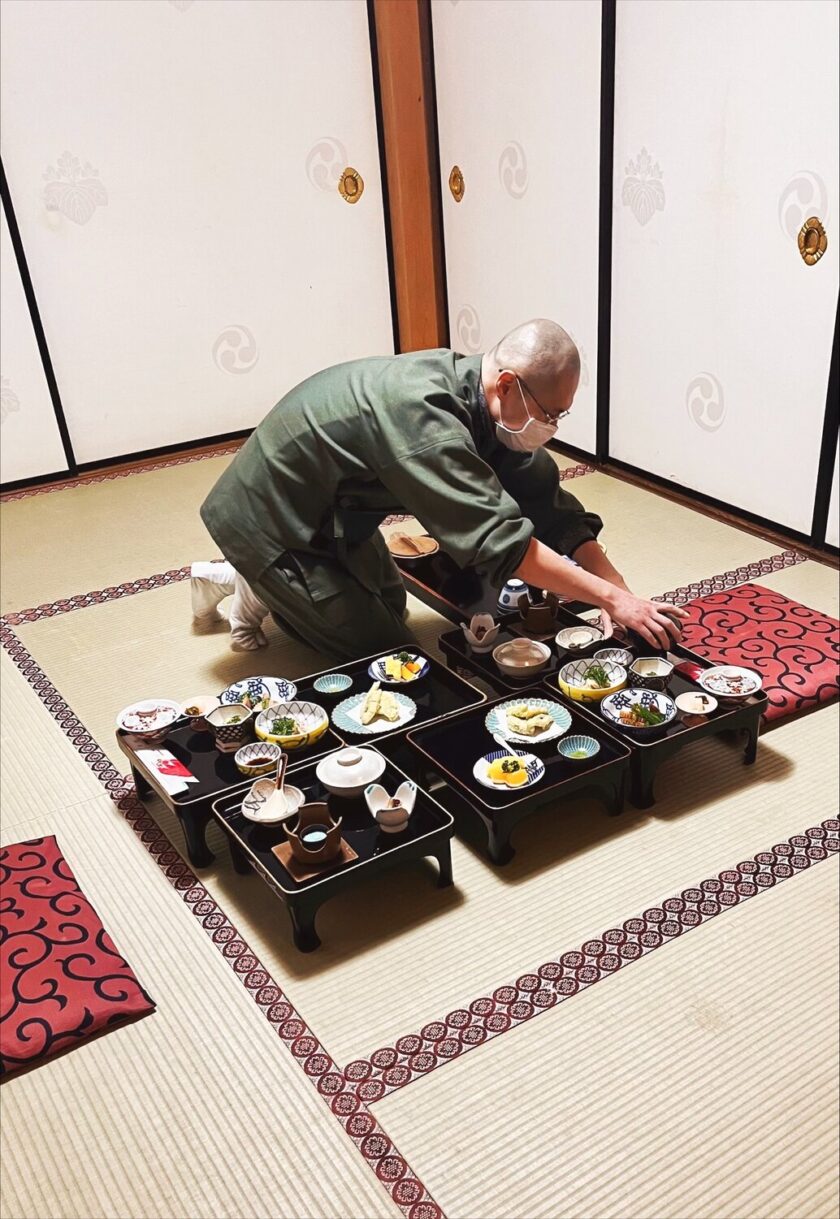
As I previously mentioned, I stayed at Mitsugon-in temple so I can only speak personally about the food I had at this lodging, and it was truly incredible!
I’ve read however that meals served at all the temple lodgings are special. By looking at photos of other places though, I do think Mitsugon-in temple is among the best for food if that’s an important aspect of travel for you.
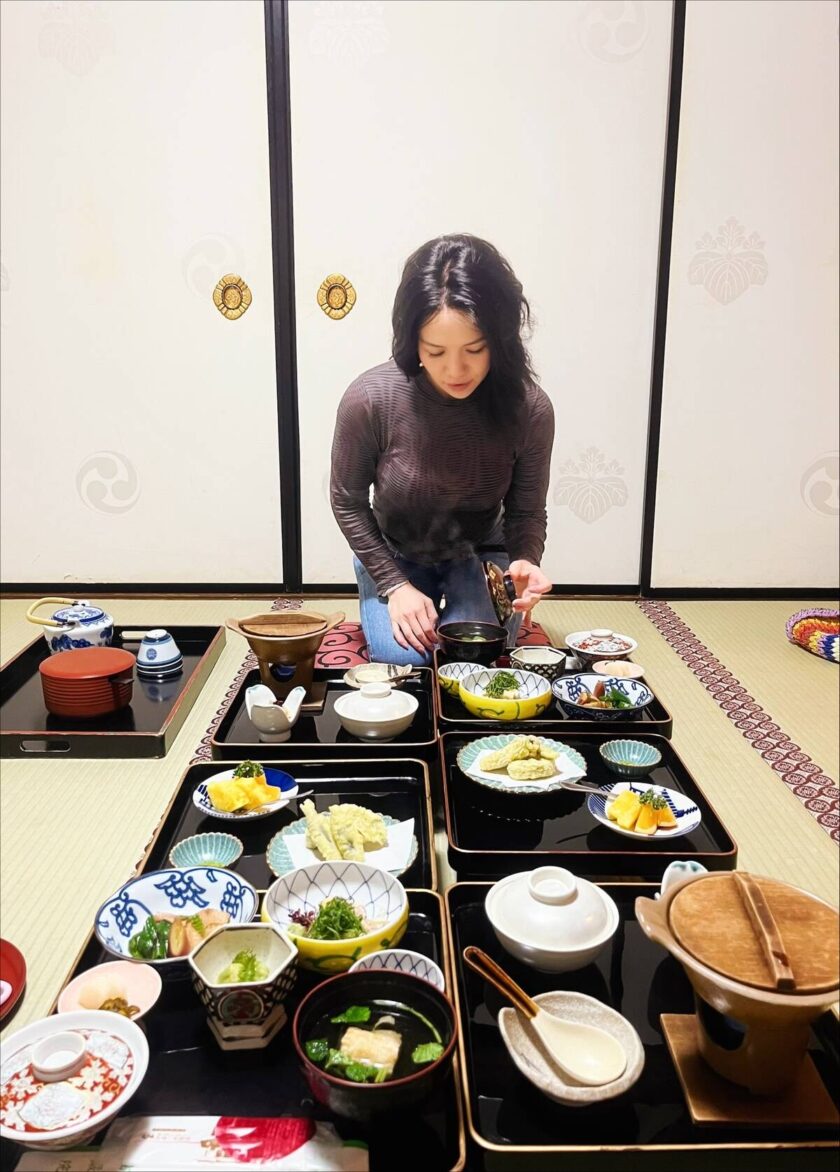
Here, I had Buddhist vegetarian meals (Shojin Ryori) of dinner and breakfast served by the monks who lived in the temple.
Shojin Ryori is based on the concepts of five flavours, cooking methods and colours. each meal contains a grilled dish, deep-fried dish, pickled dish, tofu dish and soup dish and is so delicious and filling.
The attention to detail was off the charts. Everything from the presentation of the meal to the various textures and subtle flavours was absolute perfection.
Note that all dishes made in temple lodgings are vegetarian, but I assure you that even the most dedicated meat-lovers won’t be disappointed, let alone even miss meat for a few days.
Guests will experience an array of local produce. Impressively, the monk who brought me my food told me that lots of the ingredients had been sourced from the garden.
Dishes included lots of mushrooms, eggplant, and tofu marinated with rich yet delicate flavours.
There are two special tofu dishes in the area. The first is Koya-dofu ‘freeze-dried tofu’ and the second is goma-dofu (sesame tofu) – a silky tofu dish that is usually eaten with miso soup or by itself with a sweet sauce.
Would I recommend staying at Mitsugon-in Temple?
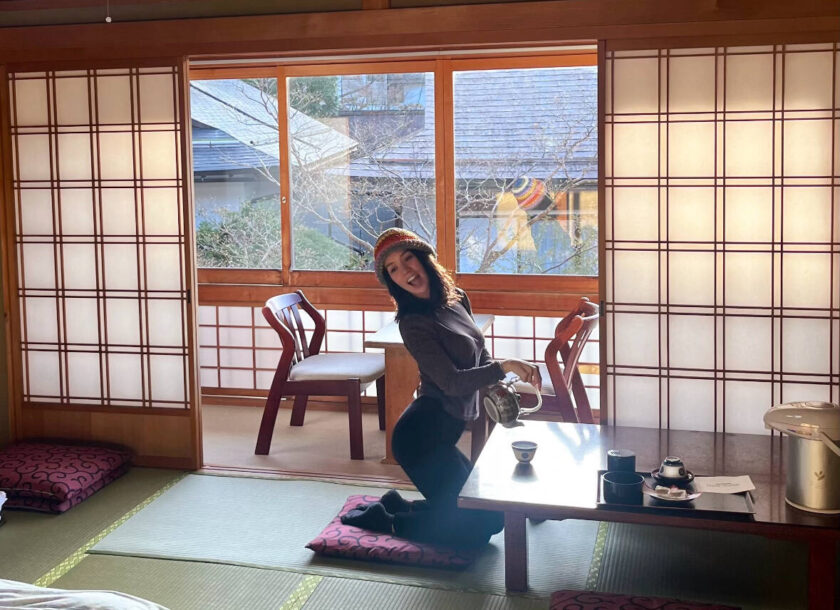
All I can say is that I would happily stay at Mitsugon-in again. However, I don’t have experience of staying overnight at other temples so it’s hard to give a definitive answer as to whether it should be a first choice.
It’s not as big and popular as some of the other temples so there might be slightly less to do with regards to exploring. But if you’re looking for somewhere that feels authentic and intimate with genuine hospitality, I’d definitely recommend this place. I particularly enjoyed spending time in the inner courtyard complete with a kai carp pond and beautiful trees.
As mentioned, the highlight for me was the food. I thought the presentation was an art form, and the flavours and tastes were incredibly nuanced and flavoursome. You can tell that the monks pride themselves in this area.
Do note however this temple lodging provides shared public bathrooms (separated between men and women), which meant that taking a shower was done in a communal room complete with open showers and an osen. If you’re a bit of a British prude like me, it might take getting used to, but once you step foot inside the warm onsen to relax, you forget about feeling self-conscious!
Each guest is given a yakata robe to wear around the temple and little slippers. The yakata is a cotton summer kimono, typically worn in casual settings and to nearby bathhouses. I wore this when getting ready to bathe in the evening, but for breakfast and dinner downstairs I just wore my regular clothes which seemed to be the done thing.
Attending morning prayer
At six o’clock every morning, you’re also invited to watch the morning prayer. Usually starting around 6 am and lasting about 45 minutes. The morning prayer is conducted by the monks living in the temple.
It’s a very spiritual start to your morning, bringing you closer to the Buddhist mantras which spreads into all aspects of the rich cultural area of Koyasan. I attended on my first morning at the temple, but decided to sleep in for the others – with the early start, hopefully you can’t blame me!
Top attraction: Okunoin Cemetery
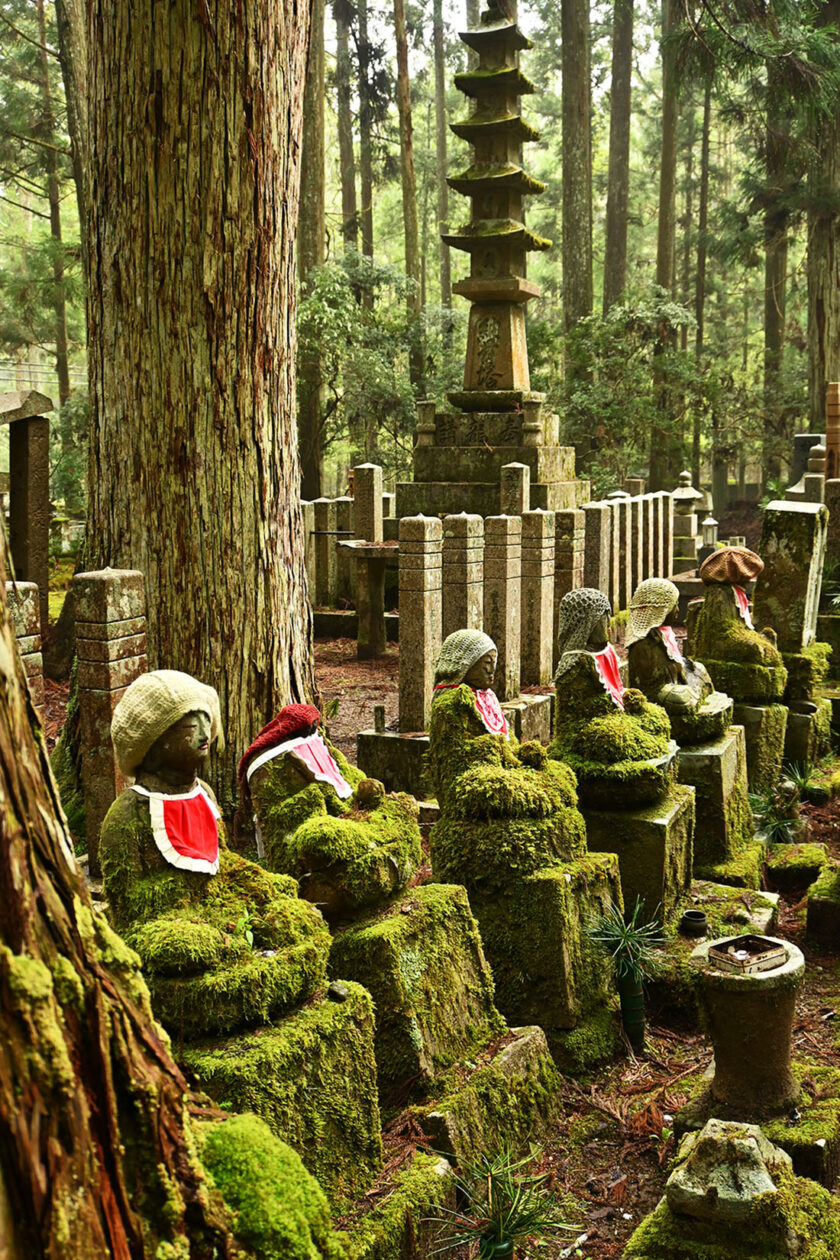
I say without hesitation, there’s nowhere else on earth like Okunoin Cemetery. If you wander off the main paths, you could spend a whole day there if your heart desired. It’s so much more than just being Japan’s largest cemetery, perhaps it can be best described as a living and breathing museum dedicated to ‘waiting’ souls.
At the end of the cemetery lies Torode Hall containing the mausoleum of Kobo Daishi. People from all over the world come to pay their respects and see the wonder of Torado Hall, where the votive lanterns are said to have burned in this hall uninterrupted for thousands of years, reflecting the notion that life is a continuum.
It’s difficult to evoke the sense of being there without visiting for yourself, but I’ve put together a blog post which I hope gives it justice: The Eerie Beauty Of Okunoin Cemetery on Mount Koya, Japan.
Top temples to visit in Koyasan
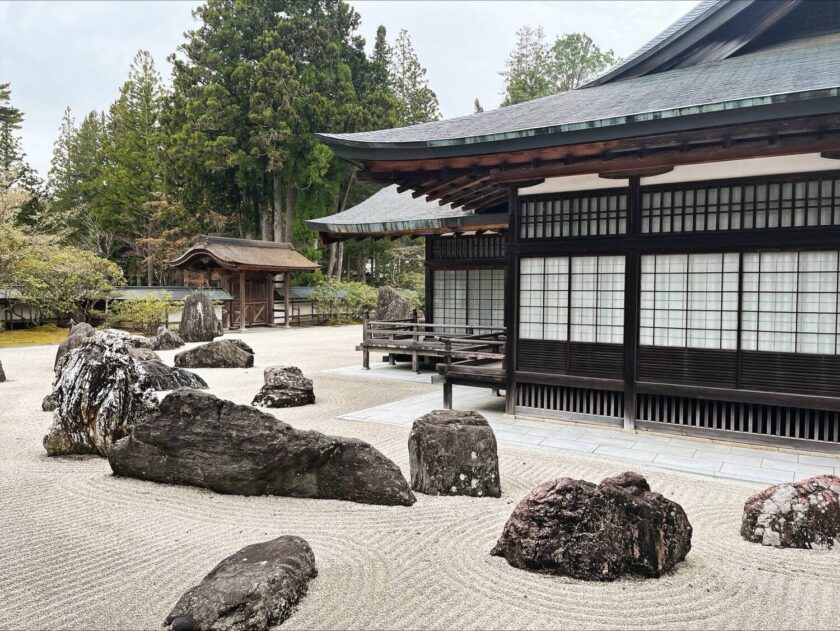
- Kongobuji Temple: Visit the headquarters of the Shingon Buddhist sect, where intricate sliding doors, elegant gardens, and traditional fusuma paintings adorn the halls. Don’t miss the stunning rock garden, a masterpiece of Zen design.
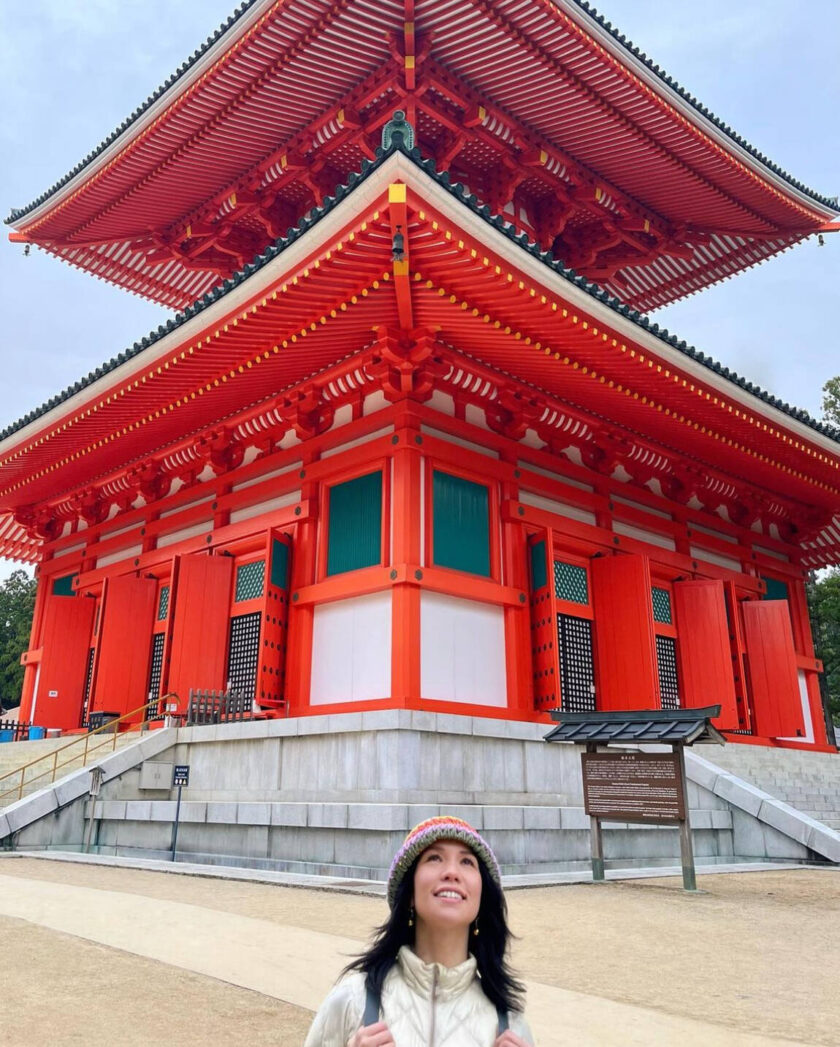
- Danjo Garan: Discover the spiritual heart of Mount Koya at Danjo Garan, a complex of temples and pagodas founded by Kukai himself. Marvel at the iconic Konpon Daito Pagoda, an architectural marvel that symbolises the centre of the Buddhist universe.
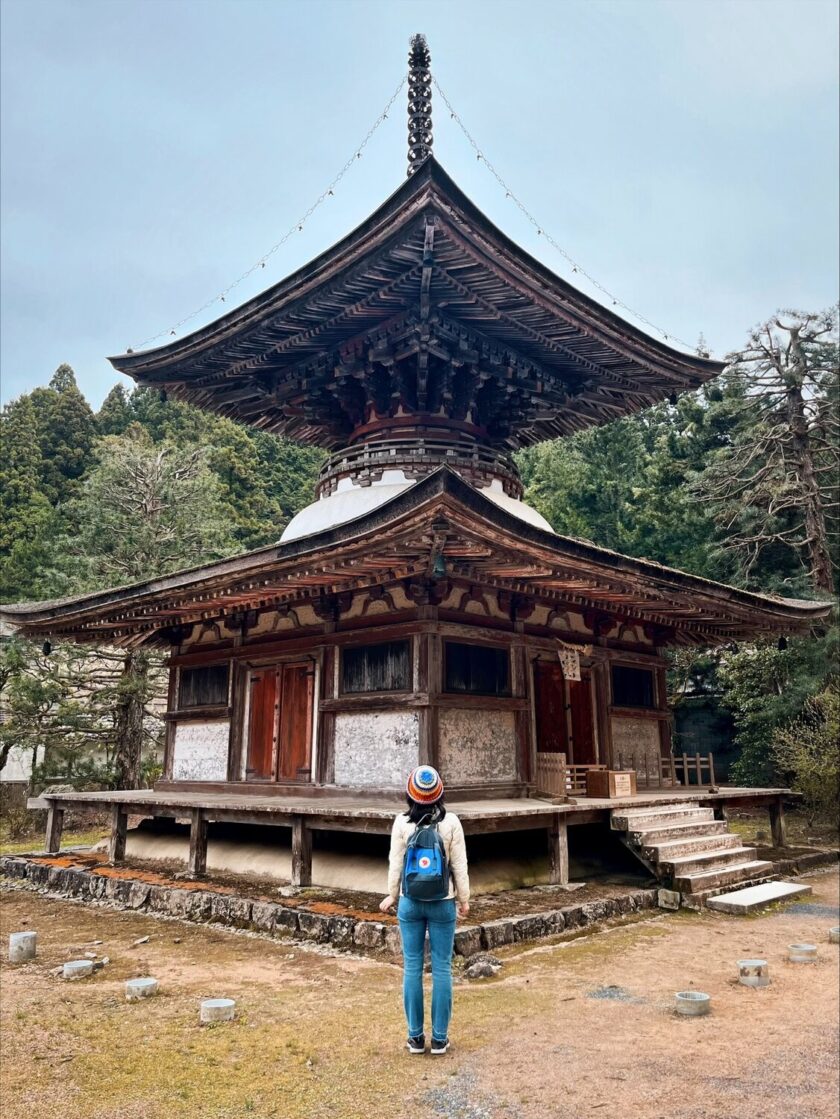
- Kongosanmaiin: This complex receives a lot less tourists than the others, despite it being no less interesting. If you’re looking for somewhere that feels less like a museum, and more akin to a sanctuary, this small temple complex is the one for you. Inside it contains Kongo-sanmai-in Temple Stupa, the oldest stupa in Koyasan, and one of the few existing made in the Kamakura period style. As a result, visiting here feels like you’ve travelled back in time.
Hiking trails
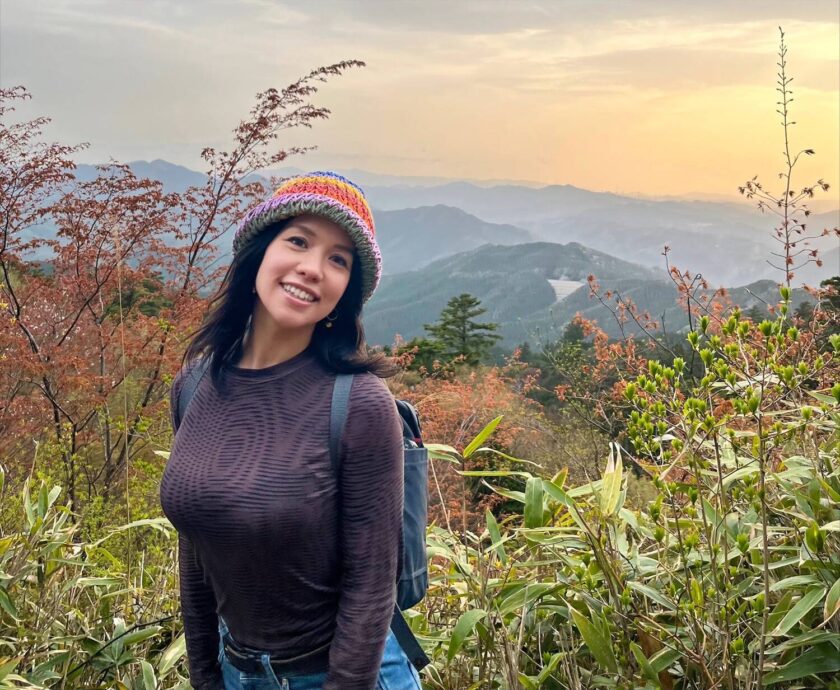
With its network of trails Koyasan is a hiker’s dream with many embarking on the routes as a pilgrimage while others simply want to appreciate the pristine forests and mountain trails surrounding Mount Koya, where seasonal beauty abounds.
In spring, cherry blossoms carpet the landscape in shades of pink, while autumn paints the mountainside in a kaleidoscope of fiery hues. No matter what time of year you go, as you walk in nature it’s hard to believe such serenity exists.
If you’re looking for somewhere to admire the sunset, I recommend the short hike up Mt. Benten-dake (Benton Peak). The Shinto shrine on the summit venerates the goddess Benzai-ten, a Buddhist deity derived from the Hindu goddess Sarawati. She is the patron goddess of everything that flows, including music, water, time, speech, and wisdom. The access point to the hiking trail is located next to the impressive Daimon Gate.
For an easy hike enjoy the Fudozaka Trail which takes you from Gokurakubashi Station on a 2.5km trail to the Fudozaka-guchi Nyonindo temple. For the more adventurous there’s the Kohechi Trail, a challenging week long hike through the mountainous terrain.
Read more: How to spend 2 weeks in Japan


